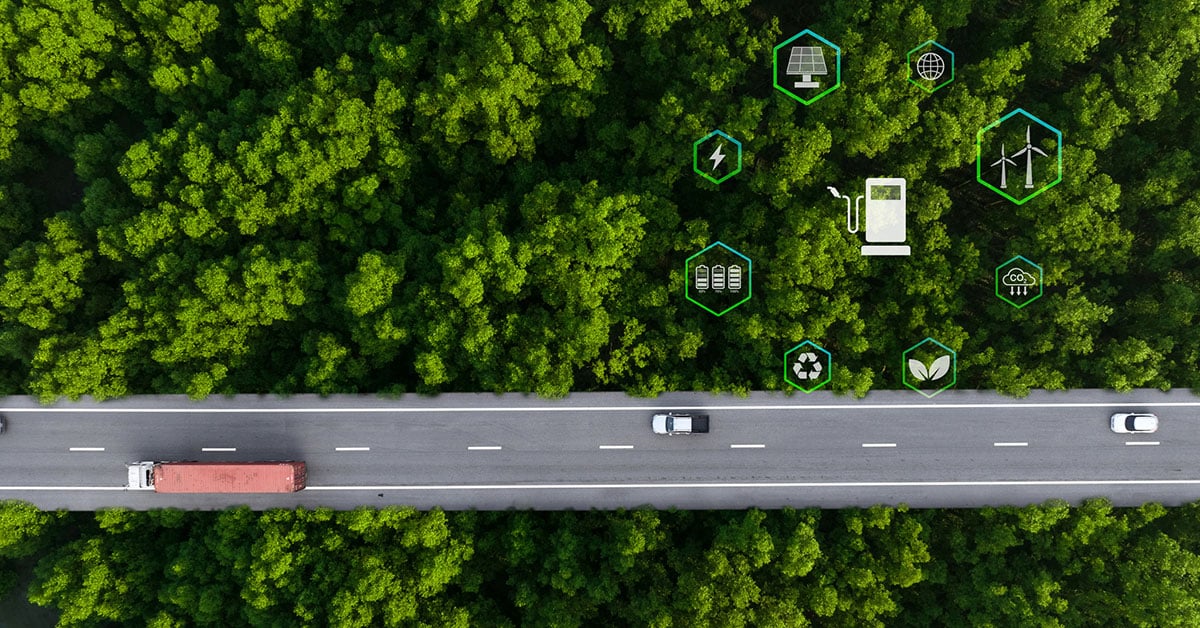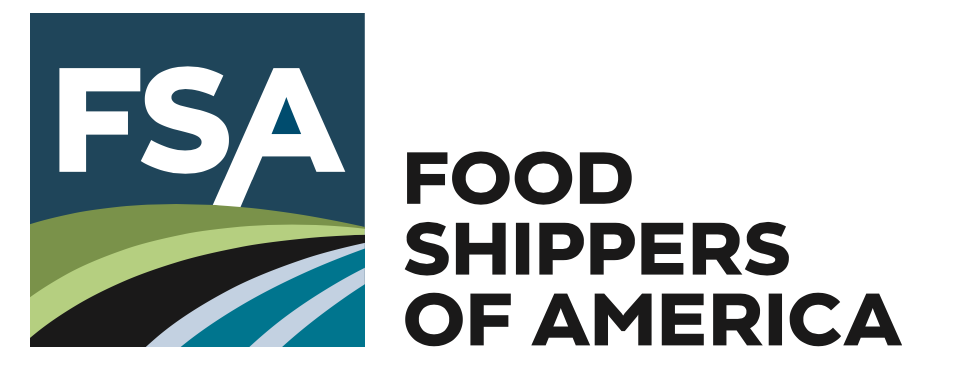Resources to Build A Sustainable Food Chain
by TIA | Sponsored Content, on Sep 11, 2023 3:44:08 PM

In recent years, food manufacturers, retailers and distributors have set ambitious goals to decarbonate their food chains and document their progress in this area. Whether the goals are to comply with new government mandates for emissions disclosures, to meet consumer demand for more sustainable products, or directives by key stakeholders, the impact on food shippers and their provider partners can be significant.
What are some food shippers and their partners doing to make a difference? Here are just a few examples recently reported on the Food Shippers Blog:
- Food Brands Focus on Sustainability to Celebrate Earth Day
- Green Logistics and the Food Chain
- Cargill Chartered Ship Tests Wind Power at Sea
- Unilever’s Supply Chain and Its Suppliers
- Sysco Targets Transportation and Production Emissions in Sustainability Goals
- Cargill Soybeans: Food Chain Snapshot
Forces Driving Low-Carbon Logistics
As the world of supply chains transitions to a lower-carbon economy, providers evaluate the many opportunities and risks in this area – and much of this revolves around costs. This worldwide environmental movement poses questions about the cost food shippers are willing to pay to select more eco-friendly transportation and logistics options. In addition, providers are questioning how they will absorb the added costs and complexity of reporting emissions and sustainability data because every food shipping customer may have different requirements, formats and standards.
Consumers are increasingly considering the positions of companies on environmental, social, and corporate governance (ESG) before investing or purchasing their products. Logistics providers are seeing demand for greener solutions from types and sizes of food shippers - but especially manufacturers of food and consumer packaged goods (CPG), who see financial paybacks from being on the leading edge of creating sustainable supply chains.
In collaboration with NielsenIQ, McKinsey analyzed five years of U.S. sales data (2017 to June 2022) of products from major brands in food, beverage, personal care, and household categories. This study found that products in nearly two-thirds of the categories that made ESG-related claims grew faster than those that didn’t. The cumulative growth of these products averaged 28% over the five years versus 20% for those that did not make such claims.1
Shippers interviewed for a whitepaper recently published by the Transportation Intermediaries Association said that sustainability is critical for product sales, whether for its brands or white-label products. Ziad Naulsi, Senior Vice President of Operations at Fresh Del Monte — a large food shipper with a private fleet and logistics company — sees the financial benefits of sustainability investments in multiple areas.
Scoping Transportation Emissions
According to the TIA whitepaper, North American providers of transportation and logistics services are seeing an impact by a law passed by the European Union on Jan. 5, 2023, called the Corporate Sustainability Reporting Directive (CSRD). The law requires manufacturers to provide more detailed sustainability reporting for Scope 1, 2, and 3 emissions:2
Scope 1: Comprises direct greenhouse gas (GHG) emissions from manufacturing
Scope 2: Is indirect emissions from purchased electricity or other forms of energy
Scope 3: Is indirect GHG emissions from upstream and downstream activities in the value chain including transportation.
To comply with this new CSRD law, Kraton Corp., a global manufacturer and marketer of biobased chemicals and specialty polymers, works closely with its transportation partners worldwide to inventory Scope 3 emissions. This step requires establishing new targets and strategies to mitigate GHG emissions, says Pedro Lopes, Chief Sustainability Officer of the Netherlands-based company. The Biden Administration is implementing similar changes in the U.S. The Inflation Reduction Act, which was signed in January, requires emissions disclosures for products the federal government selects for use in construction projects. A more far-reaching climate disclosure rule was proposed in March 2023 by the Securities and Exchange Commission. This year, the rule could be finalized and require public companies to disclose information about Scope 1, 2, and 3 emissions.3
The Freight Market Exposes Weaknesses
Ambitious goals driven by food shippers to reduce carbon emissions are shaping how they evaluate providers of transportation and logistics services they partner with. Yet the widening gaps in pricing for conventional versus low-carbon and zero-emissions transportation and logistics services have exposed a fault line. A recent study by Boston Consulting Group found that 82% of companies are willing to pay more for sustainable shipping. Still, price premiums are insufficient for motor carriers to make large-scale investments without generous state and federal incentives—whether direct funding or tax credits
Zero-emission solutions that use electric vehicles can double or triple shipping costs. Paying a much higher premium is more difficult when the freight market is oversupplied with capacity. However, all shippers interviewed for TIA’s whitepaper expect low-carbon transport services to cost more.
See examples of the use of electric vehicles, as reported in the Food Shippers Blog:
Electric Vehicles: How Will Net Zero Net Out for Food Shippers
Below is a synopsis of how some shippers are weighing the necessity of using higher-priced green transportation solutions to meet emission goals despite lower general freight rates in the near term:
D.S. Smith
D.S. Smith, a London-based manufacturer of paper and packaging products, plans to reduce Scope 1, 2, and 3 carbon dioxide emissions by 46% in 2030 compared to its 2019 baseline and will reach net zero emissions by 2050. D.S. Smith has the second-largest market share in Europe and spends around $2 million on logistics in North America. After conducting annual RFPs to obtain market pricing, it will evaluate bid participants' sustainability and emissions data to make a final selection, says Taylor Mattice, North America Logistics Manager.
Sofidel
Sofidel plans to cut emissions by 40% compared to its 2018 baseline. After evaluating market rates and carriers' operational performance, the company will select providers who can help achieve its strategic goals for sustainability. We will be aggressive with this,” Abaas says. Sofidel America Corp is in the process of contracting with a handful of companies that operate zero-emission electric vehicles and doesn’t mind paying “a bit more” for lower-carbon solutions that utilize alternative fuels, he added, since “it’s better for the environment and it accounts for our Scope 3 emissions [targets].”
Agropur
Agropur, one of the largest dairy producers in the world and member of Food Shippers of America, plans to reduce greenhouse gas emissions by 30% through 2031, but transportation only contributes 3.6% of its total emissions.
“As a co-op, our main objective is at the farm level and the manufacturing plants themselves,” said Logistics Coordinator Shane Lange. With 23 plants in Canada and seven in the U.S., the company is committed to reducing GHG emissions by 24% per kilogram of milk produced. “Our customers are very conscious of emissions, and they are diving in more and more into the economic and environmental impact of their suppliers,” he said.
When the freight market returns to more pricing equilibrium, Lange expects to have more conversations with carriers and freight brokers about sustainability initiatives to award freight. Paying a premium for newer equipment, biofuels, and more “might be a little bit more costly to us,” he says, “but in the long run, meeting our goals to reduce emissions would make that a no-brainer.”
Kraton Corporation
Kraton Corporation spends about $160 million annually on transportation. It has measured and reported Scope 1 and 2 GHG emissions since 2014. By 2030 the company plans to reduce its intensity (per ton of product) by 20% compared to its 2020 baseline.
“In 2020, we reduced our GHG emissions intensity by 26% compared to 2014, which is a testament to our strong efforts to reduce emissions,” Lopes says. The company is establishing a baseline for Scope 3 emissions and targets for reductions.
Eco-Friendly Solutions in Demand
After evaluating present and future opportunities to reduce GHG emissions, shippers and transportation providers invest in areas that maximize their economic and environmental savings. Interviews for TIA’s whitepaper show four areas where focused investments are creating the highest returns:
Intermodal
Rail intermodal closely aligns with shipper priorities to reduce costs and emissions by removing the equivalent of three trucks from the road for every shipment. [potential call out box] The global intermodal market is expected to grow by more than 13% from $23.3 billion in 2022 to $26.4 billion in 2023.4
Transportation companies that provide multimodal asset and non-asset logistics services continue to see a big opportunity to convert over-the-road shipments for customers that have traditionally not shipped by rail.
Private Fleets
Shippers with private fleets are weighing the costs and environmental benefits of new equipment and electric vehicles. For Del Monte Fresh Produce N.A., a shipper of fresh produce, its private fleet is a critical part of its strategy to reach net zero carbon emissions by 2050. The company’s Tricont Logistics and Tricont Trucking entities manage transportation for Del Monte and make its vast network of trucks, warehouses, and distribution centers available to third parties. Tricont Trucking handles most shipments within 250 miles of Del Monte facilities. It is adding more than a dozen batteryelectric vehicles to shuttle containers at its port facility in Freeport, Texas.
To improve fuel efficiency, the fleet has shortened tractor leases from seven to four years and trailer leases from 10 to eight years. The cost savings justify the added costs of equipment that reduce emissions, says Robert Savage, President of Tricont Trucking and Vice President of Transportation and Logistics for Del Monte Fresh.
Tricont’s new trailers cost $150,000 each with high-efficiency trailer refrigeration units (TRUs). The company is considering buying trailers with battery and solar-powered TRUs that cost between $250,000 and $300,000 each. In the meantime, [illustration of truck charging] Del Monte is adding plugs to docks for charging and running TRUs at a lower cost with electricity.
Tricont Logistics is expanding its services to reduce the private fleet’s deadhead miles and emissions by taking trucks off the road. The company sells available capacity to external customers for palletized delivery to grocery stores and other locations. “A lot of our customers appreciate it. We are dropping their products off at our dock, consolidating, and making one delivery,” Savage says.
Dedicated Fleets
Shippers have more leverage with dedicated fleets to generate cost savings and meet Scope 3 targets for emissions by filling empty lanes with backhauls.
Transportation companies with access to freight as a carrier and as a broker can fill more empty miles for shippers by augmenting their private fleets with dedicated arrangements. Since the customer in a dedicated fleet arrangement typically pays for all miles, loaded or empty, filling more empty miles for a shipper, whether inbound freight from vendors to distribution centers (DCs) or from DCs to stores, can save customers money and take trucks off the road to reduce emissions.
In its dedicated contracts, D.S. Smith states that providers are responsible for a certain amount of savings by finding backhauls to reduce deadhead from its manufacturing and packaging plants, Mattice says.
Electric Trucks
Government regulations and shipper interest in zero-carbon transport solutions are fueling a rapid rise in the deployment of electric vehicles, especially for port drayage operations. Some transportation and logistics providers are making big bets that shippers are willing to pay significant premiums for intermodal transport services originating on the West Coast with electric vehicles.
California passed a rule that requires trucking companies to buy electric models starting in 2024 for port operations. The state plans to have only hydrogen- and battery-electric trucks calling at its docks by 2035.
Use Cases: Emission Tracking Platforms
For manufacturers, measuring Scope 1 and Scope 2 emissions is far easier than Scope 3, says Kraton’s Minco van Breevoort. Identifying the baseline is the hardest part, as “there’s a big risk that everybody measures it their way.”
To help drive standardization, shippers are partnering with private rating firms. These firms send questionnaires to transportation providers to input emissions data. Shippers use the data to establish baselines and targets for Scope 3 and to document their progress.
Here are a few examples of how shippers are using emissions tracking systems today:
D.S. Smith
D.S. Smith is not using a third-party service. Presently the company discusses sustainability initiatives with for-hire and dedicated fleets to see what solutions they have implemented. Mattice said these discussions occur during its annual RFP, especially with carriers and logistics providers with the most business.
In addition, D.S. Smith is piloting a program with its largest 3PL that services Europe and North America. The 3PL will add emissions reporting with carriers through electronic data interchange (EDI) connections.
Del Monte Fresh
Del Monte Fresh does not track Scope 3 emissions of transport providers, but that could change after Tricont Logistics implements a new transportation management system (TMS). Savage believes emissions tracking could become part of its data service to monitor carrier safety and insurance credentials. “We’re probably a year and a half away before we look at sustainability projects using software to identify and make choices in bid awards and the carriers we use,” he said.
EcoVadis is a platform that several shippers in this whitepaper use for tracking their Scope 3 emissions from transportation providers.
Kraton
Kraton uses EcoVadis to assess its material suppliers and service providers based on a growth-based risk score for sustainability. The platform also helps it drive improvements.
Sofidel
Sofidel uses a platform from TenP to evaluate all its suppliers' environmental, sustainability, and governance (ESG) profiles. TenP sends a spreadsheet questionnaire to its transportation providers. In return, Sofidel gets a ranking with green, yellow, and red scores. Sofidel gives suppliers in the yellow and red zones a timeframe to improve. Agropur requires all its carriers to be EPA SmartWay certified and plans to do the same for brokers it works with. Recently, its international logistics department started a program that asks carriers and freight brokers to report shipment-level emissions. The company can provide its customers with emissions data for each order with this data.
Agropur
Agropur is not currently using emissions data to evaluate transportation providers, but “as we get more efficient and better at taking control of this, we will probably correlate this data with our RFP,” Lange said
Evaluating the Opportunities
Regulatory and market pressures for low-carbon transport services create new opportunities and risks for shippers, logistics providers, and motor carriers in the food and beverage industry.
Overcapacity in the freight market for 2023 has exposed a fault line from shippers being less willing to pay premiums for more environmentally friendly options. The pricing gap will narrow as the market returns to equilibrium. In the final analysis, logistics providers can expect more shippers will be evaluating their efforts to reduce GHG emissions and ask for data to establish Scope 3 baselines and targets and document their progress.
Besides investing in low-carbon transport solutions, customers will ask logistics companies to satisfy additional reporting needs. This may lead to opportunities for developing new standards and being known as information and solution providers during the transition to a low-carbon economy.
Download TIA Whitepaper: https://www.tianet.org/wp-content/uploads/2023/09/TIA-Whitepaper-Sustainability-2023.pdf
Sources cited:
Transportation Intermediaries Association: www.TIAnet.org
- https://www.mckinsey.com/industries/consumer-packaged-goods/our-insights/consumers-care-about-sustainability-and-back-it-up-with-their-wallets
- https://corpgov.law.harvard.edu/2023/01/30/eu-finalizes-esg-reporting-rules-with-international-impacts/
- https://www.goldmansachs.com/insights/pages/gs-research/gs-sustain-esg-regulations-us-sec-proposes-major-new-climate-disclosure/report.pdf
- https://www.prnewswire.com/news-releases/a-surge-in-demand-for-rail-freight-transportation-will-drive-significant-growth-in-the-intermodal-market--by-the-business-researchcompany-301752599.htm
Like this kind of content? Subscribe to our "Food For Thought" eNewsletter!
Now more than ever, professionals consume info on the go. Distributed twice monthly, our "Food For Thought" e-newsletter allows readers to stay informed about timely and relevant industry topics and FSA news whether they're in the office or on the road. Topics range from capacity, rates and supply chain disruption to multimodal transportation strategy, leveraging technology, and talent management and retention. Learn More



